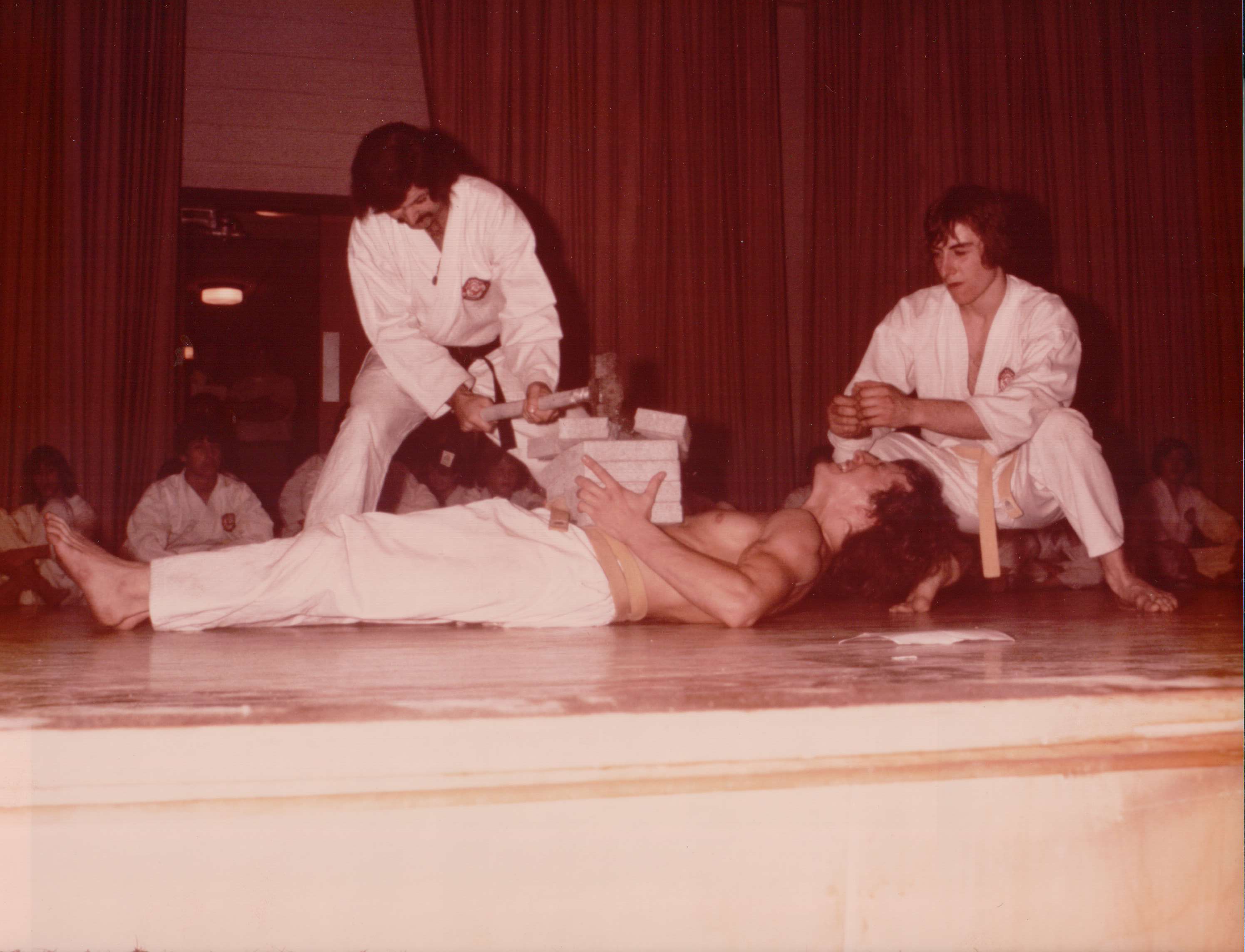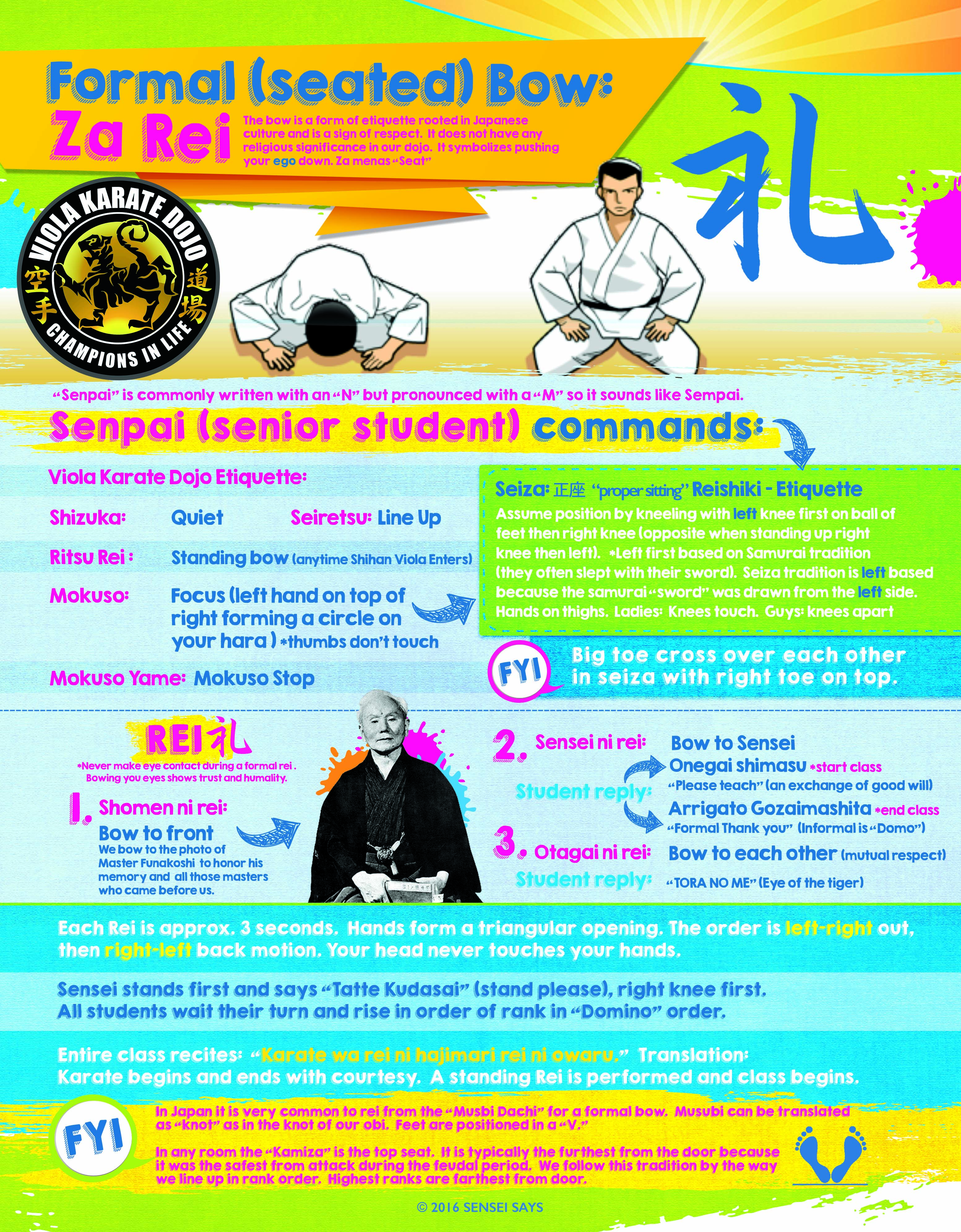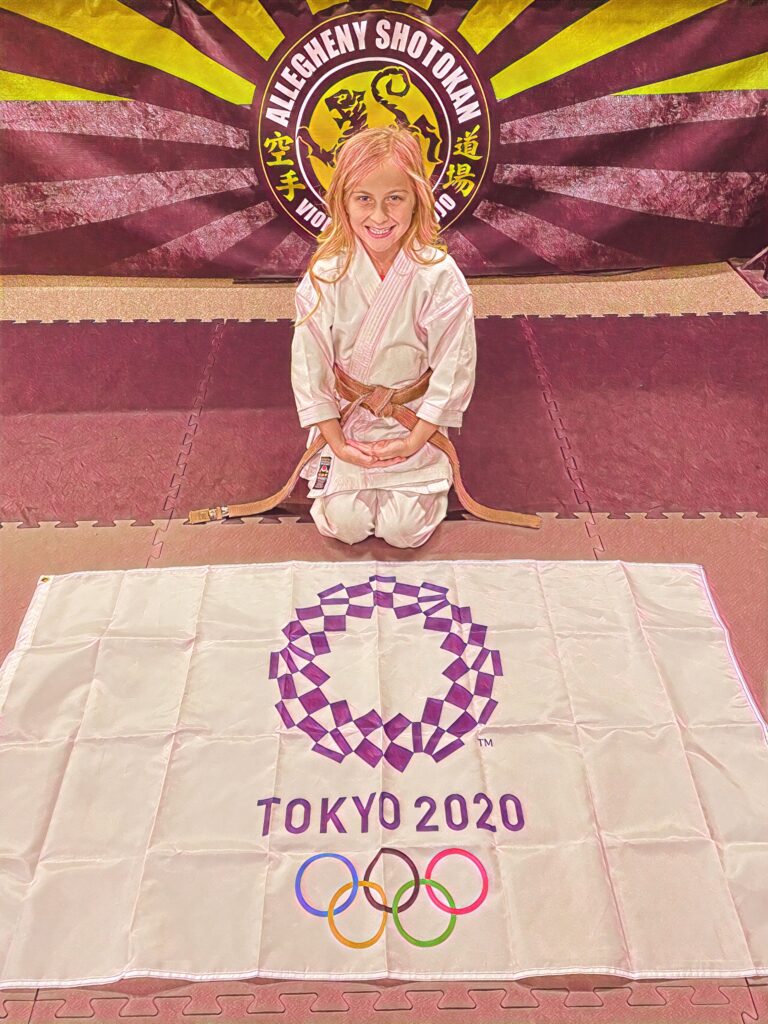At Viola Karate we teach traditional martial arts and training methods including:
Most importantly is budo (the martial way)
| What we Teach | Kanji | Description | Memo |
| BuJutsu | 武術 | Martial Arts-skill, method, science of Japan – older/parent (warrior technique) mortal combat | self-protection |
| Budo | 武道 | Martial Way – philosophical Life skills more modern 17th century+ | self-perfection |
| Bugei | 武芸 | Art of War – Catchall term for Japanese fighting arts embracing both budo/bujutsu bu=martial gei=art | military art |
| Martial Arts | 武芸 | Latin term “arts of Mars” (Mars/Roman god of War) it is the | umbrella and generic term for fighting arts |
| Karate | 空手 | 1 of many Japanese martial arts (judo, jujutus, akido etc.) meaning “empty hand” (developed in Okinawa) | influenced by Chinese Kenpo |
| Shotokan | 松濤館 | A Japanese style of martial arts created by Gichin Funakoshi (1868-1957) | meaning the house of pine waves |
| Kumite | 組手 | Fighting: using martial arts skills (waza) in realistic combat situations such as free sparring or block and counter. | meaning crossing of hands |
| Goshin | 護身 | Real world self-protection techniques | self-defense |
| jū-jutsu | 柔術 | Close combat used to neutralize an opponent in the form of pins, join locks, throws and submissions | Jiu-jitsu is the Brazilian spelling |
| Tegumi | 手組 | Japanese wrestling, submissions and leverage | kumite backwards |
| Kihon | 基本 | The fundamentals and building blocks of karate (blocks, punches, kicks, strikes, stances) | Basics |
| Kata | 型 | Karate forms required for advancement. Memorized patterns of techniques that | simulate an imaginary fight |
| Bunkai | 分解 | Analysis or disassembly of kata to fully understand its techniques | to break down |
| Oyo | 応用 | Application of bunkai by extracting movements of the bunkai (personal and creative interpretation) | apply, practical use |
| Kobudo | 古武道 | Okinawan weapons training including the bō (wooden staff) sai | Old martial way |








